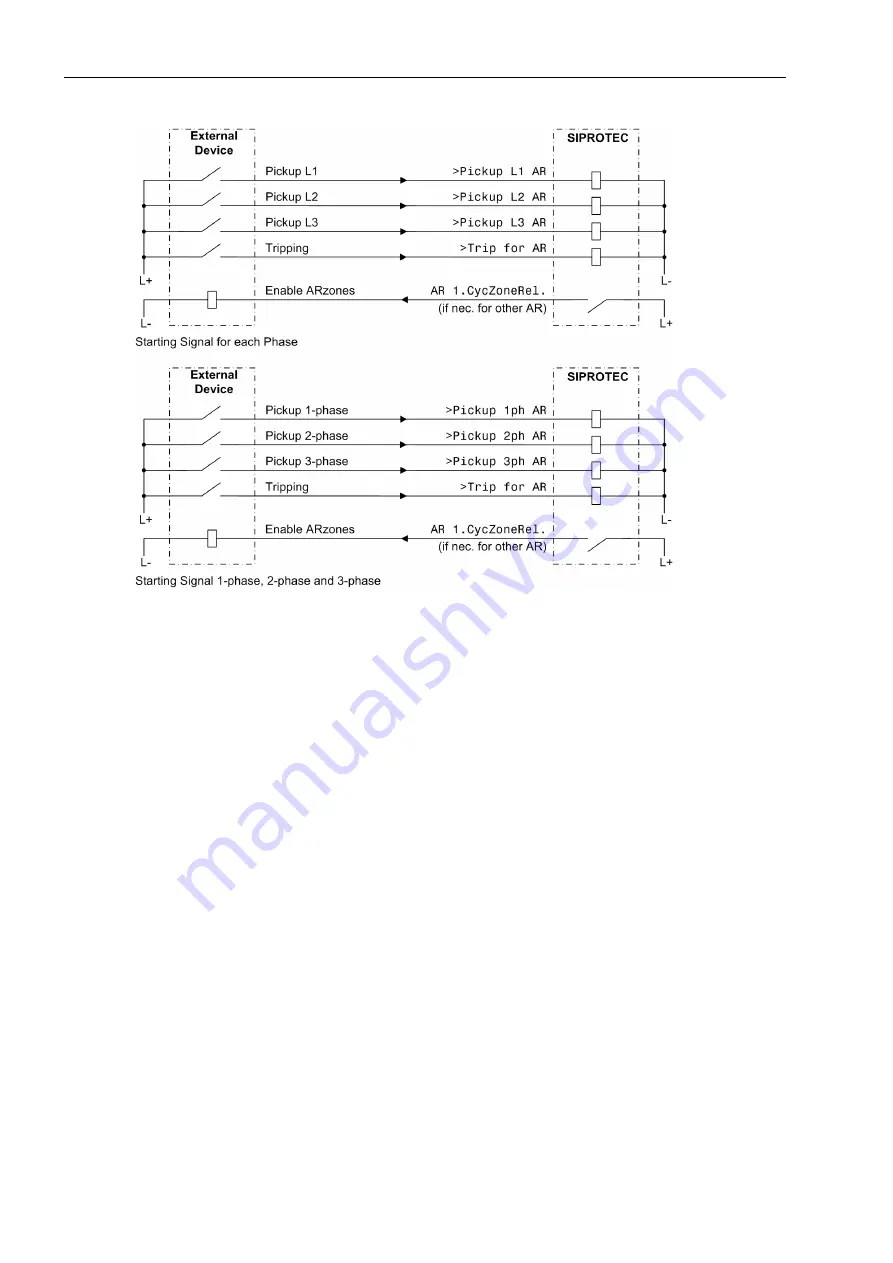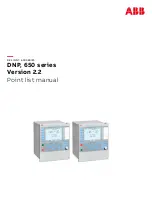
Functions
2.17 Automatic Reclosure Function (optional)
SIPROTEC, 7SD5, Manual
C53000-G1176-C169-5, Release date 02.2011
332
Figure 2-165
Connection example with external protection device for fault detection dependent dead time —
dead time control by pickup signals of the protection device; AR control mode = with PICKUP
2 Protection Relays with 2 Automatic Reclosure Circuits
If redundant protection is provided for a line and each protection operates with its own automatic reclosure func-
tion, a certain signal exchange between the two combinations is necessary. The connection example in Figure
2-166 shows the necessary cross-connections.
If the auxiliary contacts of the circuit breaker are connected to the correct phases, a 3-pole coupling by the
7SD5 is ensured when more than one CB pole is tripped. This requires the activation of the forced 3-pole trip
(see Section 2.17.2 at margin heading „Forced 3-pole trip“). An external automatic 3-pole coupling is therefore
unnecessary if the above conditions are met. This prevents 2-pole tripping under all circumstances.
For the connection according to Figure 2-166 it must be considered that the cross connections to the second
protection must be interrupted during the check of one of the two protection systems with protection monitoring
equipment. This is done, for example, by means of a test switch installed in between.
Alternatively, the variant with a minimum cross connection according to Figure 2-167 can be applied. In this
case, the following information should be considered:
• The switching state of the circuit breaker must be connected in a phase-selective way via the auxiliary con-
tacts to the corresponding binary inputs of both protection systems in case of a 1-pole reclosure. If only 3-
pole tripping is possible, the 3-pole status is sufficient.
• In order to prevent that a very quick response (1-pole) of a protection leads to an undesired 3-pole coupling
of a second protection, a „software filter time“ for the binary inputs of the auxiliary contacts is to be set (refer
to Figure 2-168).
















































